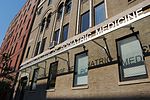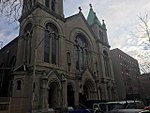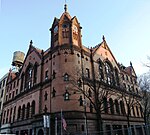North General Hospital
Defunct hospitals in ManhattanEast HarlemHistorically black hospitals in the United StatesHospitals disestablished in 2010Organizations disestablished in 2010 ... and 1 more
Teaching hospitals in New York City
North General Hospital (NGH) was an American private, not-for-profit, voluntary teaching hospital located in New York City in the East Harlem section of Manhattan at Marcus Garvey Park. It was founded in 1979 to replace, as tenant, the Hospital for Joint Diseases (HJD), which vacated its East Harlem facility and moved that same year downtown to East 17th street at Stuyvesant Square. NGH was the only minority-run, voluntary teaching hospital in the State of New York. NGH was also the only private (non-public) hospital in Harlem. After 31 years, North General Hospital closed in 2010 under financial duress of bankruptcy.
Excerpt from the Wikipedia article North General Hospital (License: CC BY-SA 3.0, Authors).North General Hospital
East 121st Street, New York Manhattan
Geographical coordinates (GPS) Address External links Nearby Places Show on map
Geographical coordinates (GPS)
| Latitude | Longitude |
|---|---|
| N 40.803333333333 ° | E -73.941944444444 ° |
Address
East 121st Street
10035 New York, Manhattan
New York, United States
Open on Google Maps






